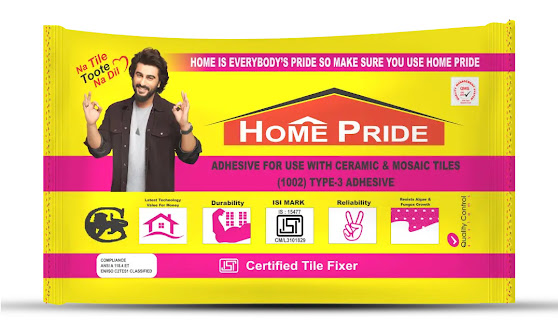Tips for Choosing the Right Rubber Mallet for Your Project
A rubber mallet is a critical part of any construction or DIY project tool set. This is especially true for tiling projects. No matter if you decide to work with Home Pride Tile Adhesive or any other tile adhesive manufacturer, the choice for the rubber mallet will decide the success of your project. This guide will assist you in selection the most suitable rubber mallet which will ensure to deliver the desired results.
The Use of a Rubber Mallet for Tile Adhesive Application
A rubber mallet can serve as a gentle hammer to tap tiles into position. It can help position the tiles for proper adhesion to the surface while preventing breakage. A rubber mallet does the same job as other hammers, but its blows are less severe meaning, unlike other hammers, there will be no damaging fractures or chips on the fragile material such as Granit, glass, ceramic, and porcelain tiles.
Important Things to Think About When Deciding On A Rubber Mallet
1. Head Material and Hardness
Different types of rubber mallets have different hardness levels and materials that make the head. The level of softness or level of hardness is determined by the tile which needs to be fitted.
For dense materials such as porcelain, stone tiles, and others, the hard rubber head accomplishes the best results whilst ensuring a tight bond with the tile glue.
- Important Considerations When Selecting a Rubber Mallet
a) Weight and Balance
When pulling up tiles, the mallet’s weight is pertinent. Most rubbers weigh between 8 ounces and 32 ounces. Lighter mallets (8-16 ounces) are preferred for more fragile tiles, while heavier mallets (20-32 ounces) produce larger tiles and thick tiles. If a mallet is properly balanced, the tiles are less likely to get damaged by the force being applied to them.
b) Head Material and Hardness
Soft rubber: Great for more sensitive tiles like glass or ceramic as these can get damaged easily.
Hard rubber: Useful when tiling materials with tough rubber. Excellent for outdoors and commercial work.
Dual head mallets: One side soft and the other hard, which makes it easier to work with various tile materials.
c) Handle Type
The handle of the rubber mallet provides quite a bit of comfort and control. Some of the all handle types are:
Wooden: Has a classic touch give reasonable control when striking, but does not absorb shock.
Fiberglass: Light yet strong which helps in absorbing vibration so it will reduce fatigue when doing extended work.
Rubber or composites: Provide a very good grip and absorb shocks which is perfect for long working hours.
d) Head of the Mallet
The larger the mallet head, the greater the surface area it covers, thus making it more effective in hitting a wider portion of large tiles. A smaller head offers better precision which is more helpful in detailed tiling work.
3. Selecting the Correct Rubber Mallet for Various Tiles
a) Ceramic and Porcelain Tiles
These types of tiles need a medium weight mallet with a soft head made of rubber in order to prevent cracking yet holding firmly on the Home Pride Tile Adhesive cement.
b) Mosaic and Glass Tiles For fragile tiles
A rubber mallet weighing from 8 ounces to 12 ounces, with a soft head is most effective. This prevents glass and mosaic pieces from receiving too much destructive force.
c) Natural Stone Tiles (Marble, Granite, Travertine)
Heavier rubber heads are best suited for this type of tile with a value from 20 to 32 ounces providing a solid bond with the tile adhesive manufacturer’s recommended product.
4. Correct Use of a Rubber Mallet in Tiling Projects
To achieve a perfect finish, the rubber mallet needs to be used in the correct manner. Follow the steps below: With a notched trowel, spread the tile adhesive as evenly as possible: Using a notched trowel, spread the adhesive meant for the tiles so it forms an even layer. Position the tile over the surface: The tile must be positioned correctly prior to pushing it down to its ideal position.
5.Mishaps to steer away from
- Utilizing a mallet that is unsuitable for the task at hand: If the mallet is too heavy, the tiles will crack and if it is too light, it will not set them properly.
- Being heavy-handed: Overdoing it can move the tiles from their original position resulting in an imbalanced level of the floor.
- Failing to select the suitable tile glue: A weak or low grade tile glue will stick poorly and will allow the tiles to come off with time. For the best results, always choose a well-known brand like Home Pride Tile Adhesive.
6. Reasons Why Home Pride Tile Adhesive Is Important For A Durable Bond
- Choosing an appropriate tile adhesive as a Home Pride Tile Adhesive manufacturer is as equally important as selecting the appropriate tools. Home Pride Tile Adhesive combines powerful bonding strength and flexibility with durability, making sure tiles stay in place for years. Some of the benefits are:
- Strong adhesion for any tile
- Water and moisture resistance suitable for kitchens and bathrooms
- Professional and Do It Yourself ease of application
- Prevention of cracks and dislodged tiles.
Conclusion
A tiling project requires a rubber mallet to properly affix a tile without damaging it. Weight, head material, handle type, and the type of tile will help in selecting the right one. The use of a rubver, together with Home Pride Tile Adhesive guarantees professional results. Trusted tile adhesives together with the use of a quality tile adhesive manufacturer and the most reliable tile offer.


.jpg)

Comments
Post a Comment